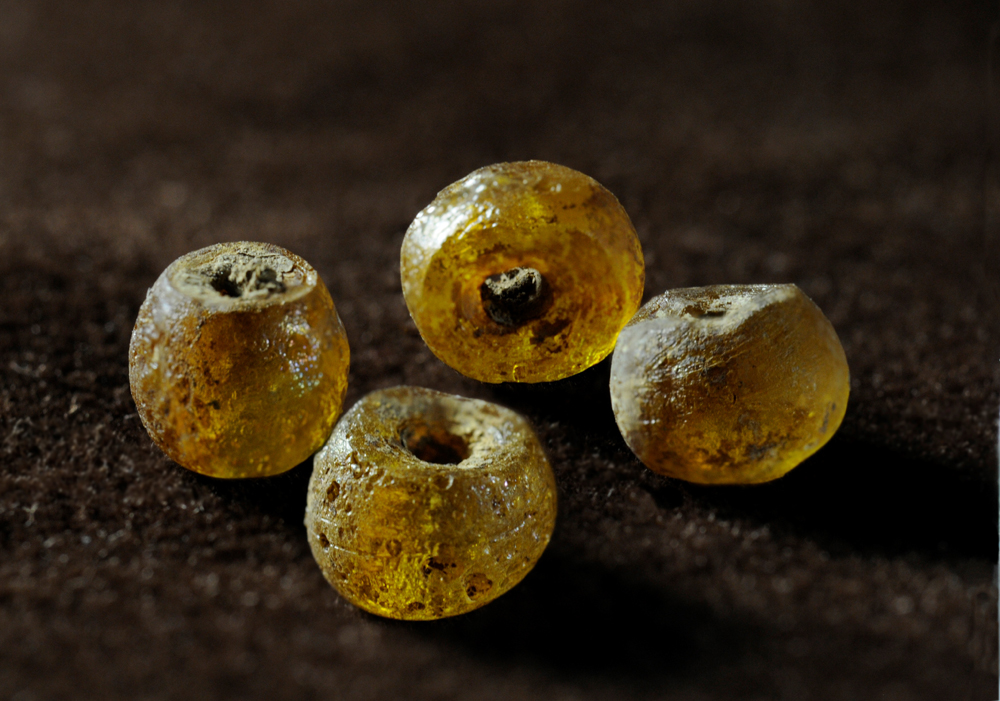Stop 4.0 - Batavia Archaeology: Amber Beads
Amber is fossilised tree resin that has been a desirable commodity for thousands of years. Although it is mined and gathered in numerous locations around the world, it is principally sourced in the Baltic Sea region. During the prehistoric era, a vast amber trade route stretched from the Baltic to the Mediterranean. In the seventeenth century, the Dutch East India Company shipped large quantities of amber, often crates of beads, to South East Asia for trade.
Amber was highly valued in both Europe and South East Asia. The walls of the famous Amber Room in the Catherine Palace, near Saint Petersburg, were adorned with mosaic panels made from amber and gold leaf. Originally constructed in Prussia, the Amber Room was gifted by the Prussian king, Friedrich I, to Peter the Great of Russia in order to seal an alliance in 1716. Peter had apparently admired the room when he visited Friedrich's Berlin City Palace. This ostentatious gift not only symbolised the wealth of Prussia, but also the bond of friendship between the two leaders and nations.
Amber was also used to fashion smaller items, such as the beads on display here. These beads are thought to have been personal items, perhaps the remnants of a bracelet. But the emotional value of these beads is difficult to assess. Who owned them and what did they feel about them. Were they a gift from a friend, family member, or lover? Gift giving – as we know from the example of Amber Room – could create or cement bonds of friendship. Gifts could also be treasured heirlooms, handed down through generations of family members, and reminding their owners of lost loved ones. While these small, deceptively plain beads might seem unassuming to modern museum visitors, they were once a treasured possession with very personal emotional meanings.


